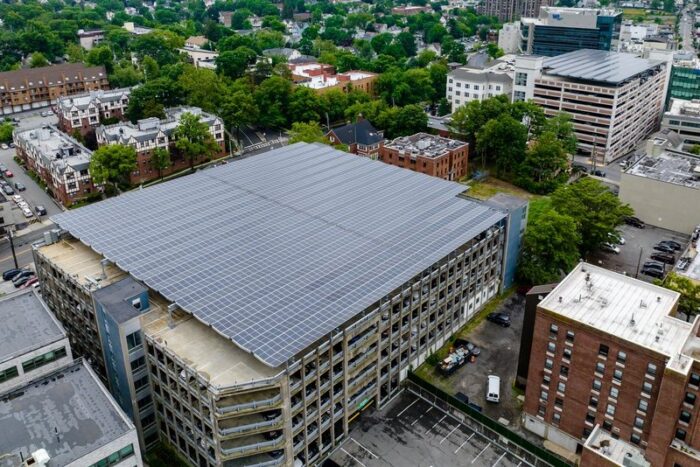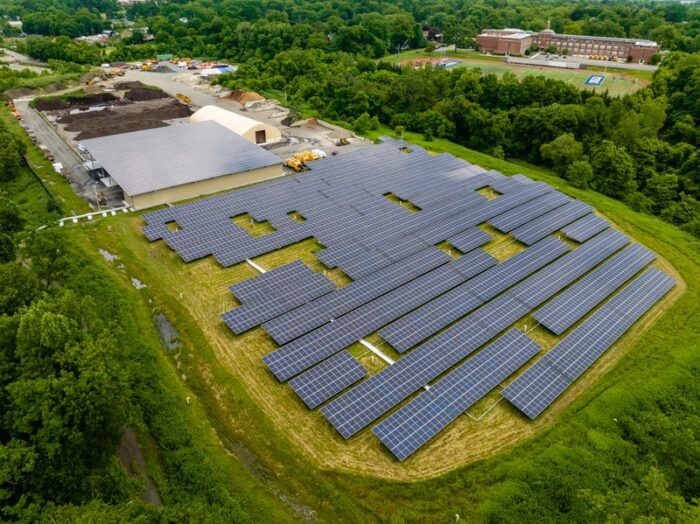How to forge successful municipal solar partnerships

By Jake Hoheim, Senior Director – Origination, DSD Renewables | Not long ago, solar panels on a city hall rooftop or stretched across a high school parking lot were a rare sight. Today, these projects are becoming a fixture in municipal planning. Town centers, school campuses, water treatment facilities, libraries, recycling plants, and more are turning available space into energy-producing assets as economics, public policy, and sustainability goals drive infrastructure decisions.
Nearly 50 GW of solar energy were installed in 2024 — a 21% increase over the previous year. Solar projects made up 66% of all new electricity-generating resources added to the grid. That momentum includes city-led efforts like San Antonio’s 42-site rollout and New York’s target of 100 MW atop municipal buildings. More than 500 localities have worked with the Department of Energy’s SolSmart program to streamline permitting, zoning, and inspection practices to make solar power more accessible.
Developers often assume municipal work will always be hard and slow. But if you understand how governments approach solar energy, the path forward often becomes easier to navigate and more predictable.
Where to start with municipalities
Before you spend time responding to an RFP or shaping a proposal, look closely at the market.
Some states, like California and Massachusetts, are friendly to public-sector solar, with clear procurement processes and streamlined approaches to expedite procurement. Others may have hidden friction. In Nevada, for example, developers sometimes encounter limited economic upside and inadequate regulatory support. In Southern Illinois, municipalities may not even have a solar ordinance in place yet — or might be in the middle of drafting one.
If you’re entering a new state or region, ally yourself. Connect with reputable EPCs in the area, individual thought leaders, industry associations, and others. Be open and honest about your intentions, goals and provide them with what valuable information you can in return. If your reputation precedes you, they’re more likely to be open to those conversations and seek mutually beneficial means to work together.
While this promotes the best tailored strategy for success, don’t reach conclusions prior to information gathering — and be honest with yourself and stakeholders. If the market doesn’t look viable, it’s better to lose fast and walk early than spend months chasing something infeasible. More so than typical business ventures, developing solar requires astute use of time, resources and minimizing opportunity cost.
Once you’ve decided to proceed, presence becomes just as important as preparation. Spending time on the ground builds credibility and gives you context that doesn’t show up in documentation. Sit in on planning meetings when you can. The tone in the room can shift how solar energy is received, so know when to speak and when to listen. Don’t underestimate pushback, either. The approval path may run through a school board, city council, zoning board, or other committees, potentially simultaneously. Developers say the public provided input in 60% of their most recent successful projects — a reminder that engagement is expected.
Even within supportive states, local dynamics vary. Some municipalities have adopted solar before. Others are just starting to think about it. In those cases, the people championing the project can be the difference between getting in the door and being passed over. A well-placed advocate can move things forward behind the scenes — or at least keep plans from stalling before they’re fully understood.
Relationships take time to build, but they’re often what keeps everything together through uncertainty, an increasingly common headwind in renewables development at large.
Aligning expectations and execution

Once a project is greenlit, the biggest risks come from mismatched expectations.
Municipal clients may expect a system to be ready as soon as it’s installed because they may not be familiar with utility timelines and interconnection queues. Even if you move quickly, you’ll still have to operate within these confines. It’s better to be transparent about this process upfront than to reset expectations later.
Permitting can also become a bottleneck. Fire marshals, electrical inspectors, local building departments — all add a layer of review and delay. Oversight bodies like California’s Division of the State Architect (DSA) may require additional structural, seismic, and safety reviews. If a municipality ties project milestones to funding deadlines or fiscal-year planning, that misalignment can be costly.
Financing deserves similar clarity. Some governments prefer to self-finance through bonds or levies. Others lean toward third-party power purchase agreements (PPAs) to avoid upfront costs. Either model can work, but each comes with trade-offs. Ownership brings long-term responsibilities, including operations and maintenance. PPAs remove that burden and still give cities and towns access to federal tax credits. In many cases, cities will also contract maintenance for their owned arrays, which offers flexibility while keeping technical responsibility in experienced hands. You’re not there to sell them on the model, but you do need to ensure they understand each option.
Sometimes, viability depends on scale. The city of White Plains, New York, developed a nine-site, 6.8 MW portfolio by bundling rooftops on an ice rink, sanitation complex, and parking garages with other locations that weren’t practical on their own. California’s San Bernardino City Unified School District implemented a 5.6 MW canopy portfolio across 16 sites. For municipalities with distributed assets, aggregation often makes the economics work.
Even within a bundled project, individual sites can still present problems. A school district may assume a roof is viable, but if it’s 19 years old, it may need structural work or reroofing before a 25-year solar term ends. And while cities and towns, unlike corporate entities, rarely walk away from their facilities, it’s still important to understand the long-term plan for the site because it may not align with the project’s lifecycle.
These are solvable issues, especially if they’re identified early. But if your teams aren’t ready for them, the project will feel harder than it is.
Earning trust through consistency
The more repeatable your approach, the more efficient every step gets. Permitting moves faster, procurement becomes familiar, and conversations don’t start with introductions. Boards will remember who stayed with them through the drawn-out RFP process or who flagged problems in a draft ordinance.
Some municipalities make that kind of presence more sustainable. When the permitting offices are responsive, the policy environment is stable, and incentives hold steady from year to year, it’s easier to build momentum. If you see those ingredients, even if the first project is bumpy, it’s worth considering another down the line.
That consistency pays off. By staying active in a market, the work becomes routine, and communities normalize solar energy. When that foundation is in place, the next project doesn’t start from zero — it starts with experience.
Jake Hoheim is Senior Director – Origination with DSD Renewables.





Comments are closed here.